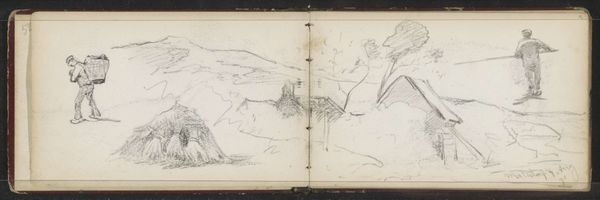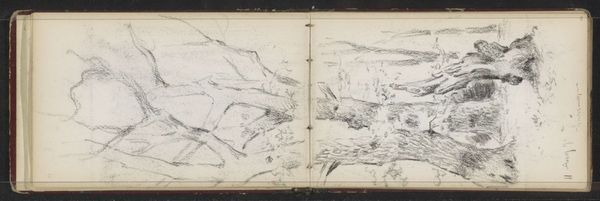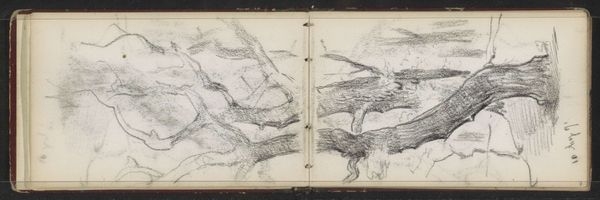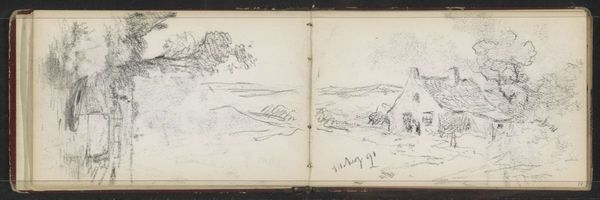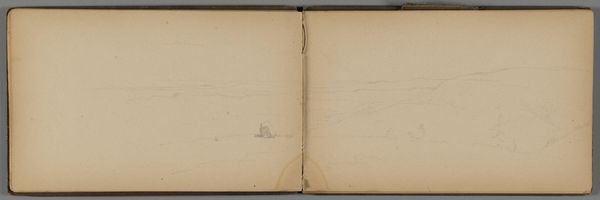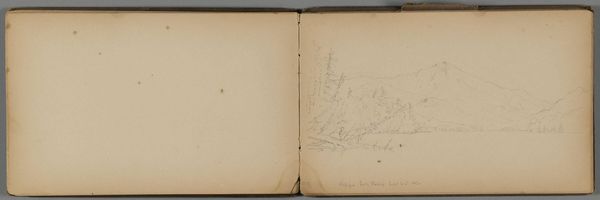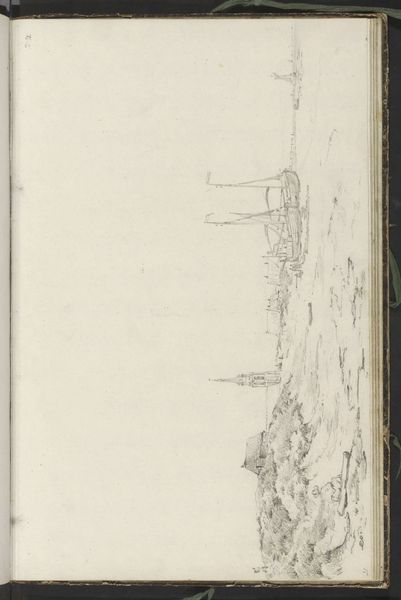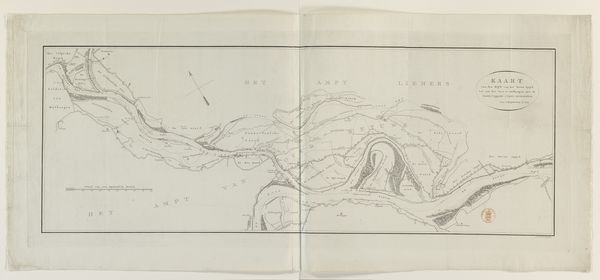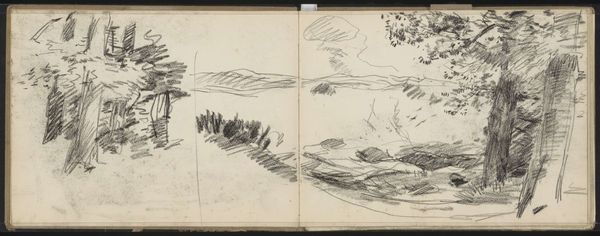
drawing, pencil
#
drawing
#
light pencil work
#
ink drawing
#
pen sketch
#
hand drawn type
#
landscape
#
figuration
#
personal sketchbook
#
ink drawing experimentation
#
pen-ink sketch
#
pencil
#
pen work
#
sketchbook drawing
#
sketchbook art
Dimensions: height 101 mm, width 157 mm
Copyright: Rijks Museum: Open Domain
Curator: Looking at Willem Cornelis Rip's "Boomstam en een zittende man," created circa 1891-1892, the sketch appears to be from a personal sketchbook, using light pencil and ink work. What's your initial impression? Editor: I find the simplicity almost meditative. There's a lone figure seated near what appears to be a fallen tree or large branch, all rendered with a delicate hand. It speaks of quiet observation and a humble connection to nature. Curator: I agree. Rip was working during a time when plein air painting was gaining popularity. These sketches represent a specific cultural interest in representing landscapes with the goal of celebrating rural life. Rip's piece has a clear tie to broader social values from the late 19th century. Editor: Yes, and the figure nestled beneath the implied shelter of the branch resonates on multiple levels. Symbolically, it evokes refuge and contemplation. This image speaks of vulnerability, perhaps a retreat from societal pressure to seek solace in the natural world. What’s interesting to me is that the artist is using a simple compositional form – the man and the log – to represent shelter, escape, maybe even a subtle political statement in this need for refuge. Curator: Interesting point about its political dimensions. One could even see a dialogue with artists such as Millet, though perhaps without the overt social commentary. We could analyze the potential social significance implied in such rural representations at the end of the century. It shows how themes like escape had broad public resonance in late 19th-century art. Editor: For me, it’s more than just escape. It's about the timeless connection between humanity and nature, using very little ink on the page! The sloped shape in the landscape, echoed in the shape of the sitting man’s form, connects man and landscape with symbolic depth. It’s as if the human form mirrors that of the environment itself, quietly affirming humanity’s inherent link to nature. Curator: It's a compelling insight, how you see the intertwined relationship through Rip's sketches, drawing parallels that resonate across history and continue to invite reflection on the enduring allure of the rural ideal. Editor: Indeed. It really highlights how artists embed profound meaning even in seemingly simple renderings.
Comments
No comments
Be the first to comment and join the conversation on the ultimate creative platform.
